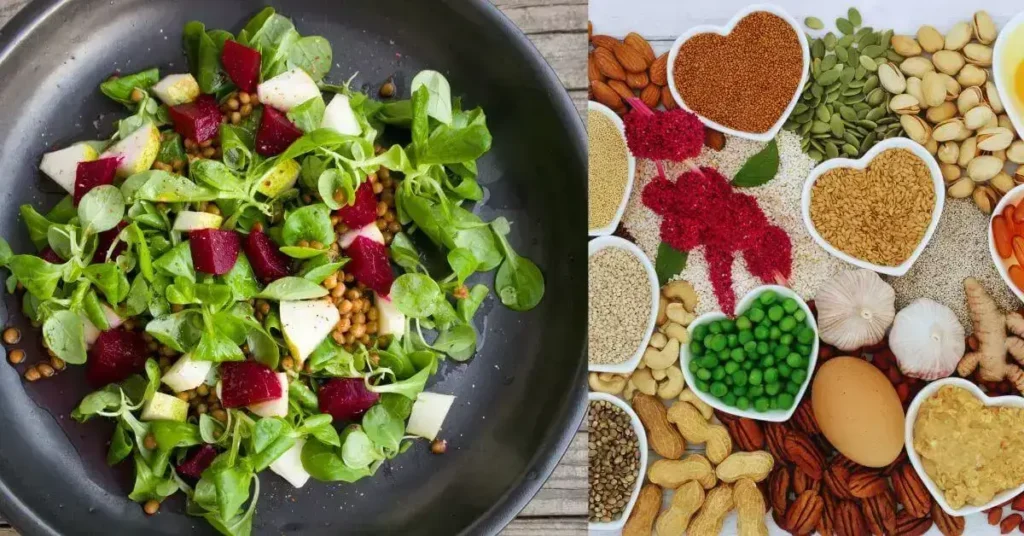Rice is not just a grain; it’s a cornerstone of culinary traditions, a source of sustenance for billions, and a versatile ingredient with a story in every kitchen. But how much do we really know about this versatile staple? Does it deserve a permanent place on our plates? From its energetic carbohydrates to the debates about its health impacts, rice presents a world of complexity behind its simple, white facade.
What is the use of rice in daily life?
Rice plays a multifaceted role in daily life, going beyond just being a staple food on the dining table. Here’s an overview of how rice is integrated into various aspects of daily living:
- Nutritional Staple: Rice is a primary source of carbohydrates, providing energy for daily activities. It’s a key component in meals across cultures, especially in Asian, African, and Latin American countries.
- Culinary Versatility: Rice’s versatility makes it a favourite in kitchens worldwide. It can be used in a myriad of dishes, including main courses, sides, desserts (like rice pudding), and even in beverages.
- Cultural Significance: In many cultures, rice is more than just food – it’s a symbol of life and fertility. It’s often used in rituals and ceremonies, such as weddings, where throwing rice symbolizes prosperity and fertility.
- Economic Impact: For many regions, rice is a critical economic crop. It’s a source of livelihood for millions of farmers and a key component in global food security.
- Health and Wellness: Rice, mainly brown and wild varieties, is valued for its health benefits, being rich in fibre, vitamins, and minerals. It’s also a go-to option for gluten-free diets.
- Beauty and Skincare: Rice water, rich in vitamins and minerals, is used in many cultures for skin and hair care and is believed to improve skin health and strengthen hair.
- Emergency Food Supply: Due to its long shelf life when stored properly, rice is a staple in emergency food supplies and humanitarian aid.
- Educational and Recreational Uses: In early childhood education, rice can be used in sensory bins for tactile exploration. It’s also used in crafts and DIY projects.
- Animal Feed: Rice by-products, like husk and bran, are used in animal feed, contributing to sustainable agricultural practices.
- Symbolic and Religious Uses: Rice holds religious significance in many traditions and is often used in ceremonies and rituals as a symbol of abundance and purity.
Benefits and downsides of rice in our daily lives
Benefits of Rice
- Source of Energy: Rice is rich in carbohydrates, which are the body’s primary source of energy. Consuming rice can provide a quick and efficient energy boost.
- Low Fat Content: Rice is low in fat, making it a heart-healthy choice for those looking to maintain or reduce their weight.
- Nutritional Value: Different types of rice offer various nutrients. For example, brown rice is a good source of fibre, vitamins, and minerals like magnesium and selenium.
- Gluten-Free: Rice is naturally gluten-free, making it an excellent food option for people with gluten intolerance or celiac disease.
- Versatility: Rice can be used in a variety of culinary dishes, from main courses to desserts, making it a versatile ingredient in cooking.
- Digestive Health: Being easily digestible and gentle on the stomach, rice is often recommended for people with digestive issues.
Downsides of Rice
- High Glycemic Index: White rice has a high glycemic index, which can lead to spikes in blood sugar levels, making it less ideal for people with diabetes.
- Arsenic Content: Some rice, mainly grown in certain regions, can contain traces of arsenic, a toxic substance that can lead to health issues over time.
- Nutrient Deficiency: White rice is often stripped of its natural nutrients during processing. Overconsumption of white rice can lead to a deficiency in essential nutrients like fibre and vitamins.
- Caloric Density: Rice is calorie-dense, which means it’s easy to consume a lot of calories quickly, potentially leading to weight gain if not appropriately managed.
- Digestive Issues: For some individuals, too much rice can lead to digestive problems like constipation due to its low fibre content, especially in the case of white rice.
- Impact on Environment: Large-scale rice cultivation can have environmental impacts, including water use, methane emissions, and land use changes.
Also read Diabetic Diet: Top Strategies for Blood Sugar Control
FAQs
Why is Rice a Staple Food in Many Diets?
Rice is a primary energy source, easily accessible, and culturally significant in many parts of the world. Its adaptability in various dishes also plays a role.
What Are the Nutritional Benefits of Rice?
Rice, especially in its whole-grain forms like brown rice, offers carbohydrates, fibre, vitamins, and essential minerals.
Is Rice Good for Weight Management?
Rice can be part of a weight management diet, especially when opting for whole grains and controlling portion sizes.
Can Diabetics Safely Eat Rice?
Moderation and choosing low-glycemic varieties like brown rice are essential for people with diabetes.
What Are the Environmental Impacts of Rice Cultivation?
Rice cultivation can be water-intensive and contribute to methane emissions, though sustainable practices are being developed.
How Does White Rice Compare to Brown Rice in Terms of Health?
Brown rice retains more nutrients and fibre compared to white rice, which has most of its nutritional bran and germ removed.
Conclusion
In conclusion, while rice is an essential and beneficial part of many diets worldwide, its type and quantity should be chosen carefully to maintain a balanced and healthy diet. Opting for whole-grain varieties like brown or wild rice can provide more nutritional benefits compared to white rice. As with any food, moderation and variety are key.


